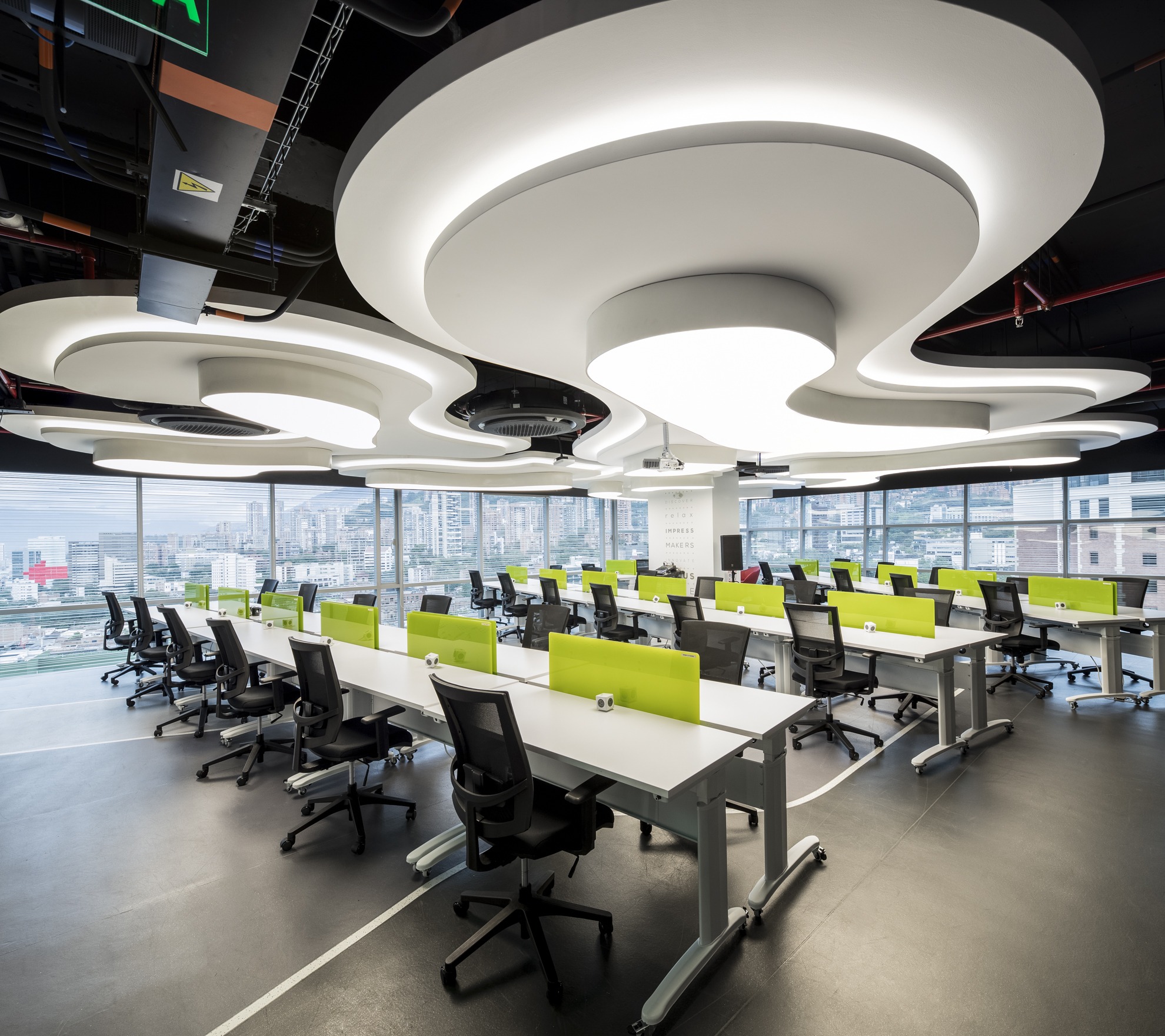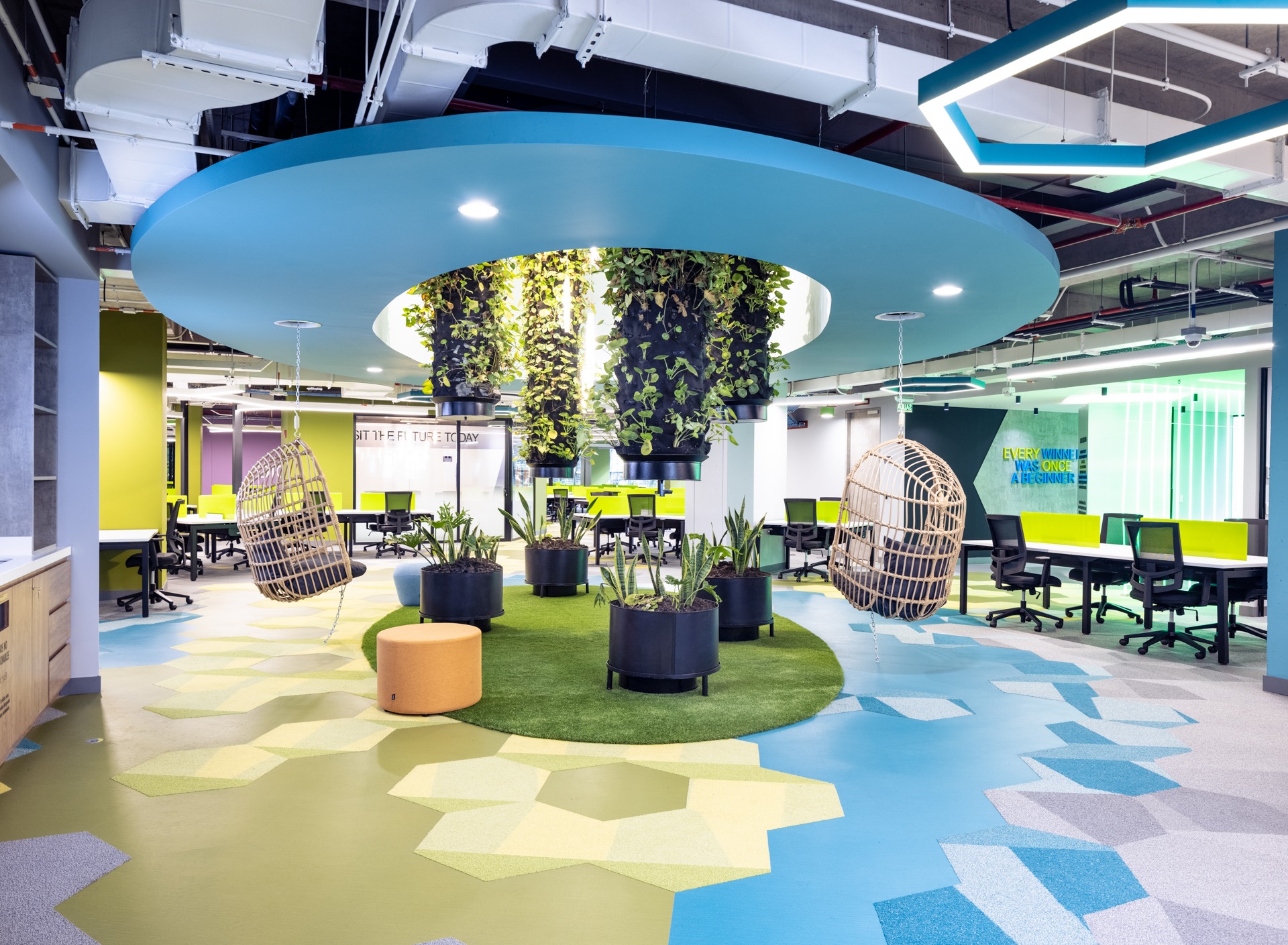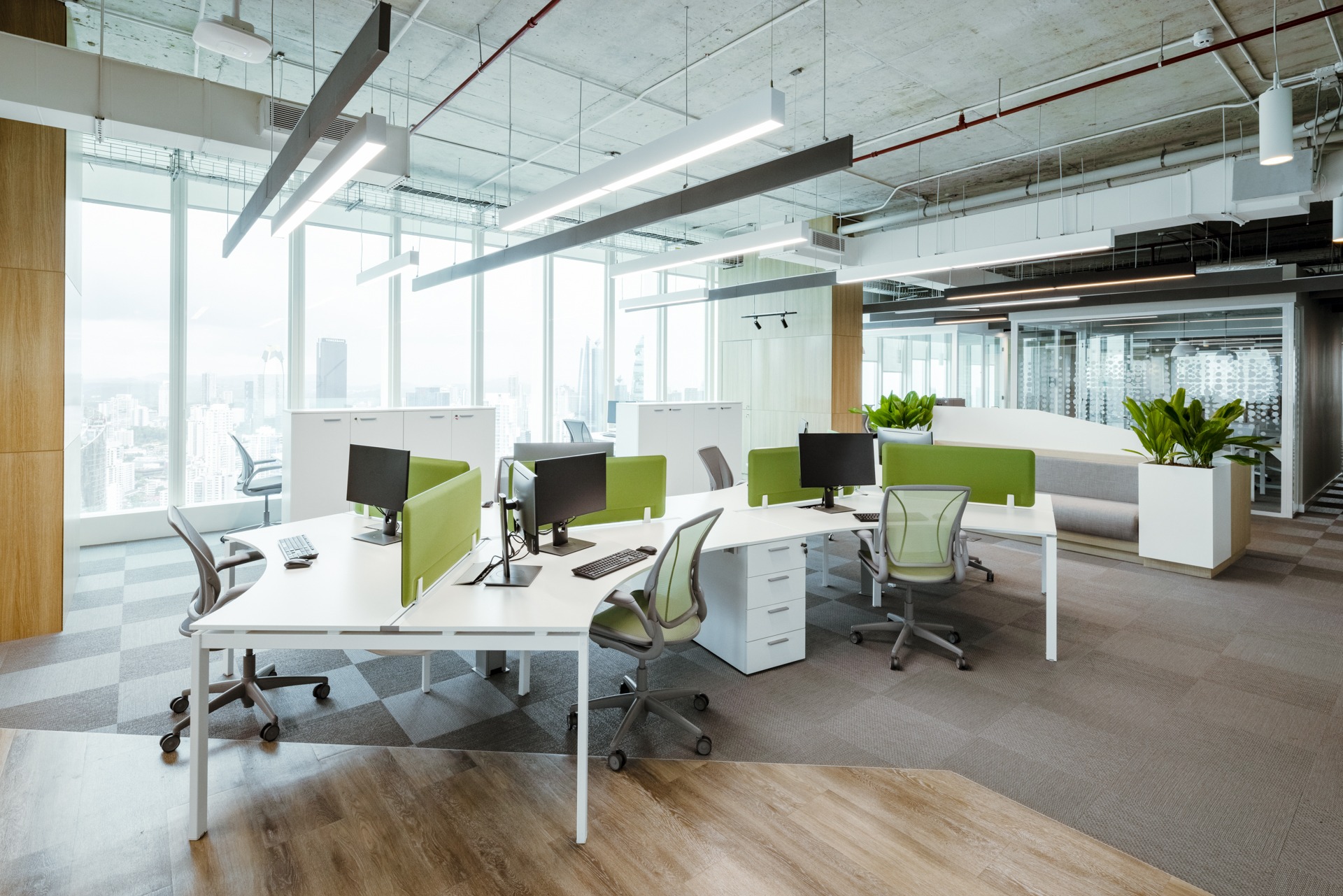A well-equipped office offers a dual advantage, the first is an office space that both companies and team members want to work in because both can thrive. In today’s offices, where well-being is at the heart of a successful business, this is especially relevant. The second advantage is real estate that will continue to be in high demand over the coming years: human-centered offices. The Modern Office It’s a question of logic. We spend an average of eight hours a day in our work environment; comfort and practicality are priorities. Aside from creating a workplace conducive to employee productivity, the modern office also gives prominence to employee well-being through design hacks that not only enhance office morale, but also make the property itself desirable. A Win For Well-being Well-being at work is all the rage nowadays, and rightly so – with mental health issues stemming from work-related issues rubbing shoulders with one out of every five Americans, the chances are that if it isn’t one of your colleagues suffering, it’s you. The consequences can never be good for business – or the people that make it all come together. Fortunately, growing awareness of the effects of the workplace on mental health and therefore, business, has captured the attention of progressive landlords and office owners. Traditional hierarchies in which the workforce is ancillary to the owner’s personal requirements for business success have been switched out in favor of flexible work employees’ work-life needs are met, and everybody benefits. The pandemic and remote work have made us reevaluate what it means to be an office worker, and the resounding outcome is that we need a work environment with a company culture that complements our well-being and work-life balance. The Worker’s Office Modern office design features not only attempt to eliminate more discrete health hazards, they actually enhance the well-being of their co-workers by placing the focus on human-centered design, where all needs of the workforce are met. High-ticket tenants and buyers actively seek out offices that tick these boxes: Ergonomic seating and height-adjustable desks can help counteract the physical discomfort of sitting in the same position for eight hours a day. Workers that have some autonomy and choice in their arrangement fare better than those that do not. We can take this further by offering a variety of workstations, such as in this office, contrasted with individualized areas such as these, where depending on the nature of the work involved, employees can flitter between face-to-face teamwork and more individualized activities. A further advantage of a working environment that offers flexibility in working areas is that it can enhance the workweek in any number of businesses. More dynamic workspaces appeal to larger audiences, which helps attract and retain top talent and is a good incentive for buyers. Biophilia is our desire to be closer to nature. Studies have shown that the mental well-being of office workers is better in offices whose design features curves as opposed to straight lines – pathways, desk edges, partition walls, and flooring can emulate nature when we avoid excessive usage of right angles, and this has a positive effect on our state of mind. When offices leverage the soothing effects of nature, such as natural lighting and an abundance of plants, we are presented with an inviting environment where employee engagement is high because they feel good. Well-being strikes again. Another key player, DEI, weaved into design is becoming a must-have for tenants rather than a nice-to-have feature. Accessibility is non-negotiable. Ramps and wide, easy access not only guarantee the comfort of wheelchair users, but they also entwine with the element of curves we mentioned previously. While most offices have accessibility in mind, the execution of such features is rarely seamless and tends to divide users according to physical ability, rather than offer an aesthetically-pleasing design that is truly inclusive. Let’s remember to offer equitable solutions that level the playing field, no pun intended. Today’s office environment transcends the caged feel of the white-walled office of the nineties to bring us divergent zones that blend harmoniously. Some of our greatest ideas come to us during the water cooler chat, that moment of socialization when the pressure of performance falls into remiss – and successful companies deem lounge areas and recreational spaces paramount to employee well-being. Furthermore, under Chapter 448 (448.05) of the 2021 Florida statutes, employees must have suitable seating for purposes of rest during the workday, making a recreational area a fundamental aspect of any working environment. Google offices even add games to their office equipment. While you don’t have to turn your facility into an amusement park, recreational areas are a pillar of workspace wellbeing, because breaks, socialization, and changing the work area let us get back to work with renewed energy and insight. Workplace Appeal The fast-paced, results-focussed, sterile environment of yesteryear has been replaced with office space initiatives that spotlight the processes and the people. The open office of our time recreates a homely, personalized space that puts employee health on a pedestal. The harmony of a modern workspace makes our workers more productive, less stressed, and more present, which is good for business. Secondly, they feel more satisfied with their job, which helps accomplish Decent Work and Economic Growth, one of the 17 Sustainable Development Goals (SDGs). Finally, the facility itself ranks highly on realtors’ listings, as companies search for the ideal companion for strategic growth and staff well-being. Conclusions Office design has the ability to make or break a team — and a business. Where comfort, in the broader sense of the word reigns supreme, office workers can feel at home away from home, in an office where their well-being takes center stage, productivity, and cognitive prowess can soar. Recap
Ergonomics is regularly misunderstood as a concept that relates purely to furniture design. However, the scope of this field of study, first coined by Polish scholar Wojciech Jastrzębowski as early as 1857 though not popularized until the translation of his book was reprinted in English in 1997, stretches beyond purposely-designed chairs and can — or rather should — be applied to the whole work environment. But why? And more importantly, how do we achieve the bigger picture of a holistically-ergonomic office? Why Create an Ergonomic Workspace? It’s no secret that office workers spend a great deal of time sitting in front of a computer screen. A sedentary career coupled with badly-designed office spaces can impair workers’ well-being, with common complaints of back pain from slouching, carpal tunnel syndrome, eye strain, and lower and upper arm pain from repetitive motions. Research has shown that poor office ergonomics is not only linked to physical ailments but poor mental health, too. Sitting for long periods can reduce blood flow to the brain, slowing brain function. Bad news for the worker and bad news for business as productivity is affected as a consequence. OSHA has cited that musculoskeletal disorders and ergonomic injuries have direct costs of between US$15 billion to US$20 billion per year. This sum comes from both the company costs and the losses a worker will experience due to sick days and rehabilitation. The good news? Much of the problem can be avoided. How to Create an Ergonomic Workspace Now you know why it is essential to look at office ergonomics from a holistic viewpoint rather than just providing good ergonomic chairs and maybe a height-adjustable desk. We need to look at the bigger picture, where the entire work environment is carefully designed to save employees’ health, maintain productivity, and reduce costs for both the worker and the business. Modern companies are already evolving to eliminate fluorescent lighting, rows of identical booths, and cold air on blast year-round to leverage natural lighting, airflow, and different areas for different kinds of work in the office where workers can flit freely between spaces in a bid to enhance their well-being. Here’s how to create an ergonomic office: Office workers need to add an element of motion into their day. Physical activity is essential for good health, circulation, and therefore mental performance. The UN office in Valencia, Spain, cleverly positioned its cafeteria separately from the main building, with a meandering path that takes its workers from one to the other. This compels staff to add to their step count to take a coffee or a bite. Even if you have no intention to build an office from the ground up, there are some takeaways from the UN office concept that can be leveraged — by creating a labyrinth of office furniture rather than rows, office workers will find that to get from A to B they will cover more distance, increasing the amount of physical activity that can be squeezed into their day. Frequent breaks should comprise part of the company culture, since they improve workers’ job satisfaction, boost productivity, and contribute to better mental and physical health, according to Michigan State University. The question is how office design can be linked to quality breaks. While some people crave social interaction, others need a place to rest and disconnect away from the bustling office environment and computer monitors. For this reason, various spaces destined purely for breaks can be a welcome addition to any office. The first option is a quiet room with comfortable (ergonomic) furniture, low lighting, and a distinct lack of electronics. More colorful and activity-based rooms or areas are an option to cater to the team’s social branch, just like in TripAdvisor’s Needham office. Although it is important to look at office design from a more holistic point of view, from within company culture, work areas that incorporate ergonomic workstations should not be overlooked. Various desk heights, adjustable ones, or standing desks come to mind. As does the option to pick up a riser for the office chair. Correct lumbar support and armrests are further considerations when it comes to furniture. In environments where screentime could develop into a concern, mitigating risk by keeping computer screens at eye level, offering employees the option to use a footrest or a keyboard tray, and fine-tuning the furniture ensembles all contribute toward a healthier, more productive, and more cost-effective business model. Recommended Course of Action Even before embarking on a design project that promises to change the office layout and incorporate spaces that are specifically designed with worker well-being in mind, instilling a company culture that encourages workers to take control of their workday to the extent of which it is a possibility is the recommended starting line. Forbes looks at the unwritten rules of great company culture, while OpenSourcedWorkplace reminds us of the physical and mental benefits of prioritizing ergonomics in company culture. After establishing and following through with an effective company culture plan, you can work with a team of experienced designers with one thing in mind: your business. At AEI Spaces, we have a team of dedicated designers who know that for a business to be profitable, it needs to care for its greatest asset: its people. And in office design, that starts with ergonomics. Conclusions When most people think of ergonomics, they think of a well-designed chair intended to support the lower back and correct posture. However, the field of ergonomics is much broader than you might expect, and includes looking at the office from a holistic point of view and considering: These aspects of ergonomics play a key role in the physical and mental well-being of your team, all the while reducing injury and improving productivity. What is good for your people is good for your business.
The office rental market is softening. Tenants may have been willing to accept a limited amount of defects in exchange for a fair price, but as choices increase, the demand for well fitted out office rentals is expected to rise. The curve showed an upward trend in rents in southeast Florida from June 2021 to June 2022, to the extent of 28% year on year, according to The Palm Beach Post. Next June, the annual increase is expected to be 18%, showing a clear indication that the price hike is losing steam. The Middle Ground Florida’s landlords have become accustomed to higher asking prices, particularly in the Palm Beach, Broward, and Miami-Dade districts, which Florida Realtors recently argued were overvalued. The slowing of the market may come with a sensation of a burst bubble for landlords, but a fairly priced market — the one we are expecting to see in the coming months — opens up a lot of opportunities for tenants, landlords, and brokers alike. Those that can foresee market trends are better prepared for quick occupancy. As prices for tenants become more affordable, the shift from a landlord’s market to a renter’s market comes ever more apparent. This is where a nimble and creative mind will greatly benefit those landlords, as well as the brokers who include their properties in their portfolios. So if tenants have more choices, the trick is to make the decision easy for them. The most versatile office spaces will trump those that have been left vacant and crumbling through pandemic absenteeism. The Great Return requires landlords to upgrade their offices, which is why AEI Spaces has researched the design trends that will affect renters’ decisions as we transition toward the end of 2022. Reformatting the layout to one that not only suits the post-pandemic era, but also takes into account workers’ newly acquired preferences is key. Flexible working, where teams can attack their to-do lists in a way that they want, requires different areas to suit different tasks. Quiet areas, collaborative spaces, and separate areas for meetings all spring to mind automatically — but lesser perused format factors can include keeping workspaces away from high-traffic areas, sufficient cabinetry to aid tidiness and reduce visual distractions, and comfortable seating areas that emulate the work-from-home flexibility to which workers have become accustomed. Starting with the stark advantages, modular office spaces provide a quick route to privacy in open offices, they are 70% faster to put together than permanent constructions, cheaper, and offer further advantages in terms of flexibility, as they can be disassembled and reassembled, meaning they can evolve with the office dynamics and needs. Modular office spaces, including cubicles that can serve as meeting rooms, can come with all the bells and whistles of a general construction project, with electricity supply, soundproofing, HVAC options, and an array of lighting. For brokers advising their landlord clients, modular office spaces can pose a quick, cheap, and effective solution for conditioning an office for the new market, leading to quicker occupancy at a fair price. While the needs and wants of the labor market show fluctuations, one thing is constant: sustainability remains high on the agenda for the talent pool. Sustainable offices are where workers want to be, which means they’re where companies want to set up. Naturally, this means landlords should not only provide this, but highlight it. Check furnishings for manufacturer sustainability certification, efficient lighting which is natural where possible, and low-VOC paints and finishings. One thing brokers and landlords can do is document this process, so that the office’s sustainability can be proven, rather than just feature on the brochure as a marketing buzzword. The pandemic brought it into the limelight; workers are now demanding it. Caring for workers’ mental health can come in many forms, not limited to policies and procedures. Our environments play a central role in how we feel, and when workers will be spending more and more time back in the office, landlords have to think about how the environments they offer will have an effect on workers’ mental health. After all, happy employees mean a healthy company, leading to the longevity of the rental agreement. Biophilia is a recurring theme in mental health, as are spaces that are not strictly dedicated to the daily slog. Workers need adequate space for downtime during work hours, which could mean dedicated areas for eating away from desks, areas that provide the opportunity for socialization, and some in which employees can simply take a break where the contrast in environment is sufficient to help employees switch off mentally. Crisis Creates Opportunity It can seem counterintuitive to make heavy investments in reconditioning a property when market declines are on the cards. But as prices drop, the amount of choice for tenants increases, which is why improvements can stand landlords in good stead to maintain their asking prices, or at least have the upper hand over those who choose to do nothing. In summary, design flexibility provides workers with the resilience they need to complete tasks effectively, increasing the longevity of businesses that choose to operate in the South Florida area. Heavy construction projects are not a necessity, as modular options can provide a cost and time-effective alternative. Sustainability is still central to business success, and a focus on mental health continues to mark its territory in the professional world. Even with a crisis forecast for the coming months, uncertainty doesn’t have to sow fear. As we know from recent years, disruption requires people to think and act differently if they are to overcome adversity. Crisis creates opportunity — the question is, how are you going to seize it? Reconditioning your office is a good place to start.




